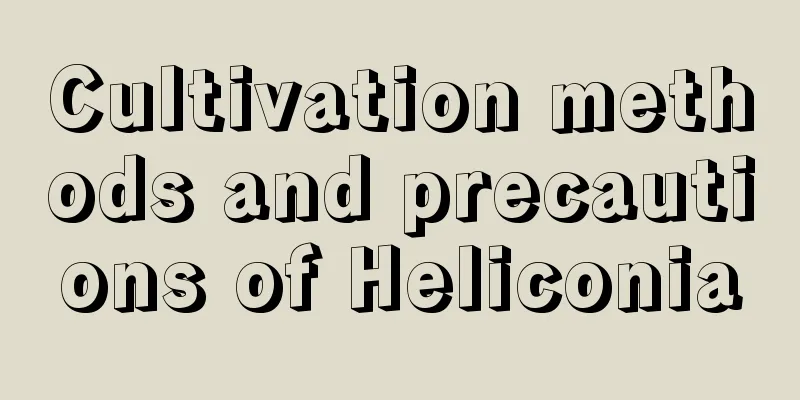Cultivation methods and precautions of Heliconia

1. Cultivation method of Heliconia1. Light. A sunny environment is the ideal growing environment for Scorpion Tail Banana. Under sufficient sunlight, the leaves of Scorpion Tail Banana will grow faster, which is also conducive to the development of its flower stems. 2. Water. Heliconia is a plant that likes a humid environment. Because of its large leaves and dense plants, its water evaporates relatively quickly, so its growth requires a soil and air environment with higher humidity. 3. Soil. The root system of the heliconia is very developed and it has lush, clustered leaves. This requires that the soil for planting should have good composting properties to avoid compaction. Generally, loose, fertile, clayey sandy soil is the best choice. 4. Fertilization. In terms of fertilization, Scorpion Tail Banana has no special requirements, but because of its characteristics such as many flower stems and fast-growing clustered leaves, its nutrient consumption will be relatively large, so the Scorpion Tail Banana will have a relatively large demand for fertilizer. 2. Precautions for the cultivation of heliconia1. Light. Although Heliconia prefers a growing environment with sufficient light, the summer sun is too strong, so you should be careful not to expose it to strong sunlight. Pay attention to watering and provide appropriate shade to prevent strong light from burning the leaves. 2. Growth environment. During the growth process of Heliconia, the soil and air environment must be maintained moist, so the soil can be kept moist for a long time by watering frequently, and the air humidity can also be maintained by spraying water. 3. Water. The soil for growing Heliconia requires good air permeability, so special care must be taken to prevent water accumulation. Especially in winter, because it is in a dormant period, the growth of the helicon banana will become slow, so you just need to keep the soil slightly moist. Excessive watering can easily lead to water accumulation, which can cause the roots of the Heliconia banana to rot. 4. Fertilization. The period of 20 to 25 days after planting the helicon banana is the time for its root system to recover. Fertilizer should not be applied at this time, which is not conducive to the recovery and growth of its root system. In severe cases, root rot may occur. |
<<: Can pine red plum bloom in winter?
>>: Breeding methods and precautions of Rhododendron ovata
Recommend
How to grow golden chrysanthemum
1. Maintain the environment 1. Flower soil: Durin...
How can a novice grow hydrangea seedlings well (how to grow hydrangeas well at home)
How to grow hydrangeas well After we buy hydrange...
What is the Indian Paintbrush flower?
1. Introduction Indian paintbrush is the common n...
How long does it usually take for mushrooms to grow after it rains (mushroom growth speed and time after rain)
How long does it take for wild mushrooms to grow ...
How to decorate the special jade lotus
What does affixation mean? Variegation, also know...
Is geranium suitable for indoor cultivation?
1. Not suitable for domestic breeding Geraniums a...
These 8 kinds of orchids are the most popular during the Spring Festival, and a bunch of flowers will fill the house with fragrance!
Cymbidium Cymbidium orchids have many colors, man...
Keeping these flowers indoors can bring good luck
Lucky Bamboo Lucky bamboo is also known as the th...
Southern grape planting and management
Grapes are fruits with very high nutritional valu...
The efficacy and function of Arisaema
Indications Arisaema contains saponins and mannit...
How to cultivate Michelia
1. Semi-shady environment Its native habitat is i...
When and how to plant cilantro
Coriander planting time Coriander can be planted ...
Hyacinth flowering period, hyacinth flower language
1. Flowering period Its flowering period is affec...
How to propagate sausage tree
How to propagate sausage tree The common method o...
What are the plants of five-color plum and five-clawed golden dragon?
Introduction to Five-color Plum Lantana camara, a...









